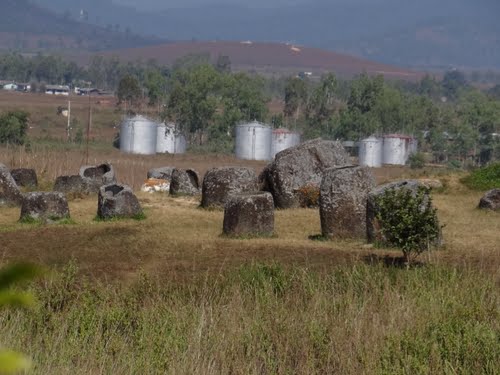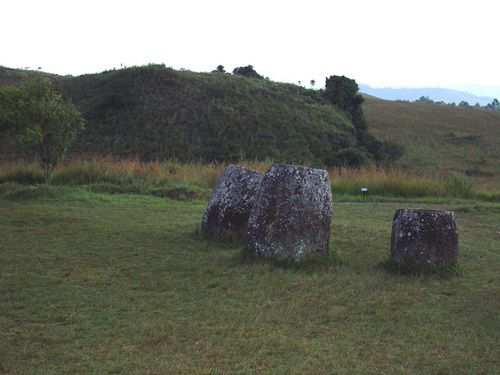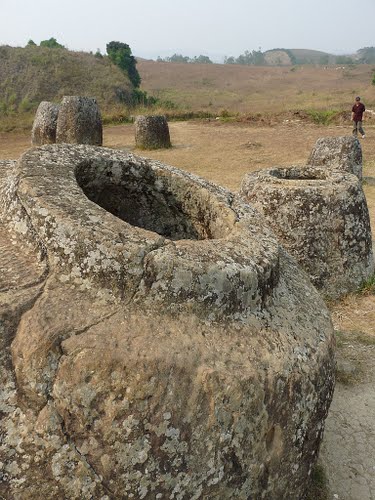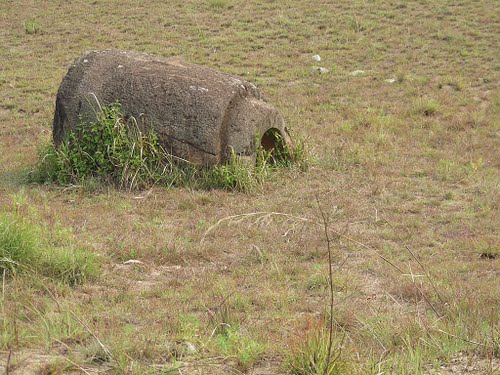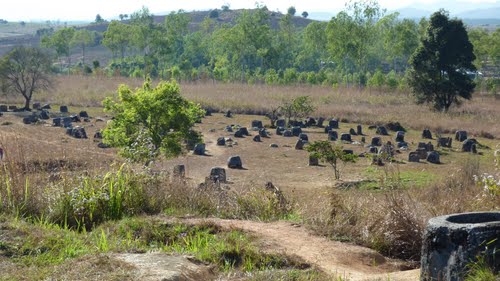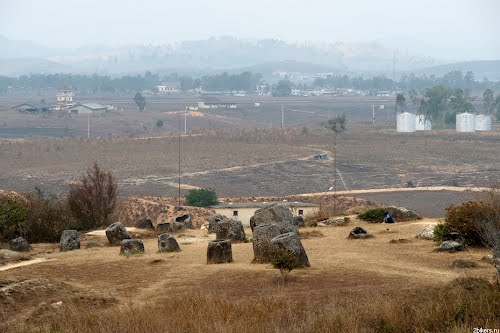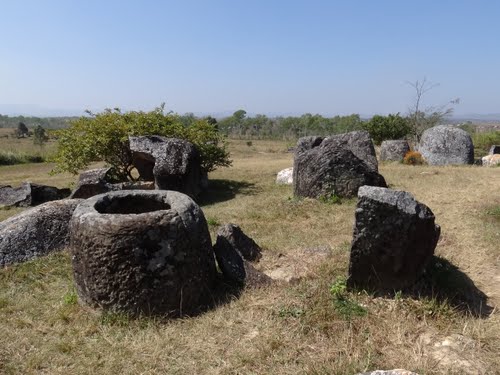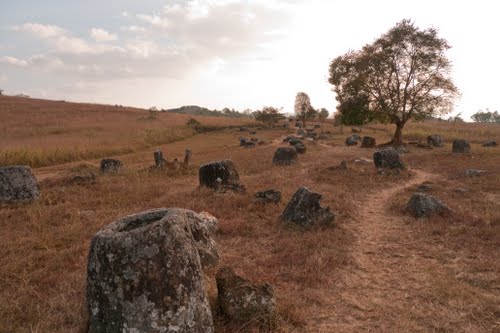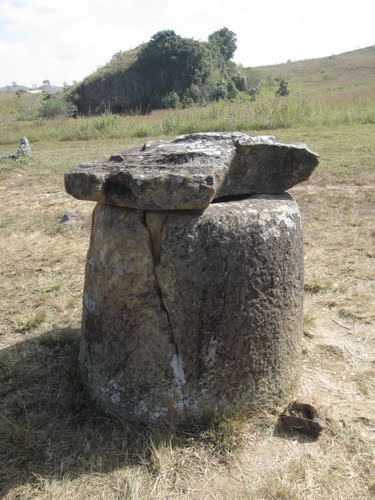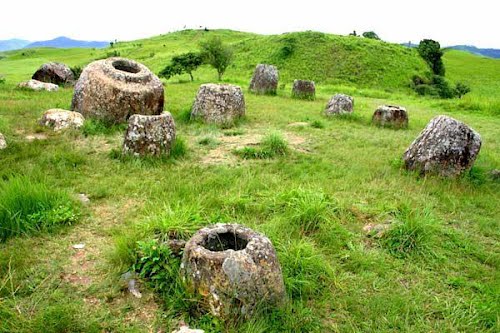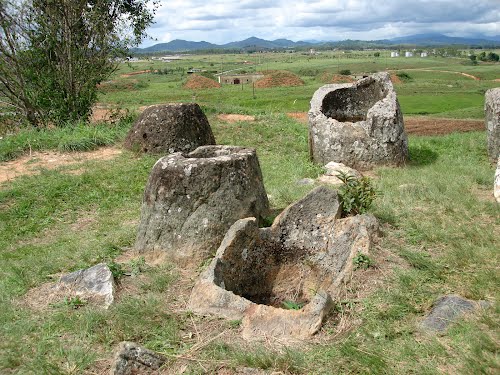The Plain of Jars is a megalithic archaeological landscape in Laos. Scattered in the landscape of the Xieng Khouang plateau, Xieng Khouang, Lao PDR, are thousands of megalithic jars. These stone jars appear in clusters, ranging from a single or a few to several hundred jars at lower foothills surrounding the central plain and upland valleys.
The Xieng Khouang Plateau is located at the northern end of the Annamese Cordillera, the principal mountain range of Indochina. Initial research of the Plain of Jars in the early 1930s claimed that the stone jars are associated with prehistoric burial practices. Excavation by Lao and Japanese archaeologists in the intervening years has supported this interpretation with the discovery of human remains, burial goods and ceramics around the stone jars. The Plain of Jars is dated to the Iron Age (500 BC to AD 500) and is one of the most important sites for studying Southeast Asian prehistory. The Plain of Jars has the potential to shed light on the relationship between increasingly complex societies and megalithic structures and provide insight into social organisation of Iron Age Southeast Asia’s communities.
The Plain of Jars is a megalithic archaeological landscape in Laos.
The jar sites
More than 90 jar sites have been identified within Xiangkhouang Province. Each site has from one to 400 stone jars. The jars vary in height and diameter between 1m and 3m and are all hewn from rock. Their shape is cylindrical with the bottom always wider than the top. The stone jars are undecorated, with the exception of a single jar. This jar has a human "frogman" bas-relief carved on the exterior. Parallels between the "frogman" and the rock painting at Huashan in Guangxi, China have been drawn. The Chinese paintings, which depict large full-frontal images of humans with arms raised and knees bent, are dated to 500 BC–200 AD.
Since most of the jars have lip rims, it is thought that the jars originally supported lids, although few stone lids have been recorded. This may suggest that the bulk of lids were fashioned from perishable materials. Stone lids with animal carvings have been found at few sites such as Ban Phakeo. The bas-relief carvings are thought to depict monkeys, tigers and frogs. No in situ lid has ever been found.
Stone discs have also been found. The discs, which differ from the lids, have at least one flat side and are grave markers which were placed on the surface to cover or mark a burial pit. These grave markers appear more infrequently than jars, but are found in close proximity. Similar are stone grave markers, these stones are unworked, but have been placed intentionally to mark a grave. To the north of Xieng Khouang an extensive network of intentionally placed largely unworked stones marking elaborate burial pits and chambers are known as "standing stones of Huaphan". These have been dated to the Bronze Age.
The jars lie in clusters on the lower footslopes and mountain ridges of the hills surrounding the central plateau and upland valleys. Several quarry sites have been recorded, usually close to the jar sites. Five rock types have been identified: sandstone, granite, conglomerate, limestone and breccia.
The majority of the jars are sandstone. It is assumed that Plain of Jars' people used iron chisels to manufacture the jars, although no conclusive evidence for this exists. Regional differences in jar shape have been noted. While the differences in most cases can be attributed to choice and manipulation of rock source, some differences in form appear to be unique to specific sites.


